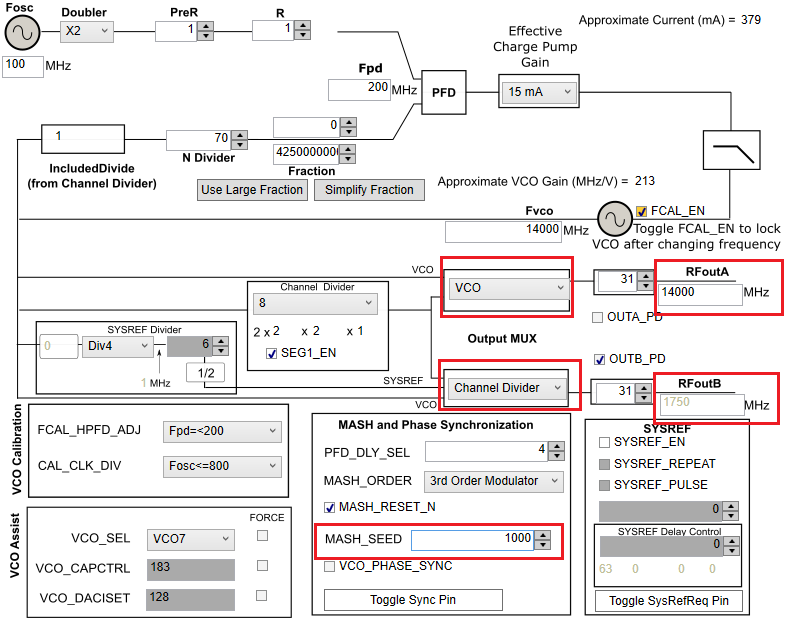Other Parts Discussed in Thread: LMX2694-EP, , LMX2594, PLLATINUMSIM-SW, LMX2594EVM
Hello,
Can both outputs from the LMX2615 be phase locked, i.e. coherent?
Can a phase shift be inserted between both outputs from the LMX2615?
Can both outputs from the LMX2615 be at different frequencies?
Kind Regards,
Rajan



